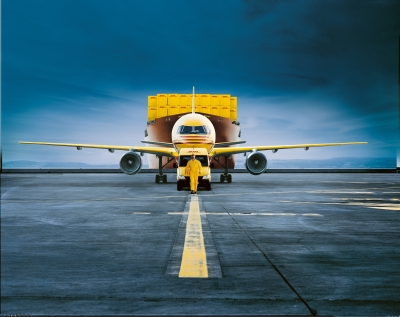
The 2013 DHL Export Barometer reveals the continuing hurdles of a strong Australian dollar and a plunging business outlook from the mining sector have impacted exporters’ profitability outlook but not their confidence.
Exporter confidence overall is on par with 2012, to where it bounced back from being ravaged by the global financial crisis. However the strong Australian dollar and increased competition has impacted on exporters’ profitability outlook with only 48% expecting to increase profits in the next 12 months.
Exchange rate worries have not significantly impacted exporter confidence over the past two years, with 58% of exporters expecting orders to increase over the next year (marginally up on last year’s 57%) and 51% of exporters achieving the anticipated increase in orders over the past year.
Senior vice president of DHL Express Oceania Gary Edstein said the 2013 DHL Export Barometer has delivered some considerable insights.
“Despite 60% of exporters saying the strong Australian dollar continues to have the greatest negative impact on export sales, exporters are coping successfully by looking for opportunities closer to home, in Asia and New Zealand. In 2013, 74% of exporters have also turned to importing, compared to just under 40% two years ago.”
Mining exporters
Mining exporters’ expected increase in profitability has fallen to 42%, well below the industry wide average; and significantly down on the 67% confidence rating recorded in 2012. This is a sign that mining exporters are coming back into line with other sectors. Similarly, only 33% of mining exporters expect an expansion in employment this year, compared to 62% in 2012 and only 49% expect a wage increase in 2013 compared to 76% in 2012.
Export destinations
Asia remains extremely important to Australia’s export future with China (57%) leading the way and India (47%), ASEAN (53%) and the emerging economies of Asia and the Middle East (48%), making up the top destinations from which exporters are expecting increased orders in the coming 12 months.
On the flip side, those further afield, in both Europe (67% in 2009 to 53% in 2013) and the Americas (from 56% in 2009 to 46% in 2013) are on the decline, when looking at trading over the past twelve months.
North America remains an important destination as the second overall current export location for Australian exporters (42%). Not to be underestimated, New Zealand was the number one export destination for exporters over the past 12 months (51%), larger than China (38%) and North America (42%).
Mr Edstein believes New Zealand is a safe testing ground for Australian exporters,
“New Zealand is an important trade lane for our customers. It one of our largest export markets and showing positive growth.”
Tim Harcourt, UNSW Economics Professor and author of The Airport Economist adds: “Australian exporters are in the fortunate position of having power of proximity to some of the strongest economies currently in the world, in particular China.
“Exporters are clustering around one or more regions – particularly the Asia Pacific. They want to be closer to home, with New Zealand, the southern hemisphere and the Asia Pacific, clearly the best markets. Concurrently food security issues are driving strong agricultural export sales to Asia – particularly to China.”
Online
A surprise result of the 2013 DHL Export Barometer was the apparent reluctance of exporters to take up online commerce. Despite the small number of exporters engaged in online selling (38%), which is in stark contrast to the online revolution going on in the retail sector, the Barometer reveals that exporters are finally seeing the benefits.
Exporters say online commerce helps with speed of delivery (40%), generates better customer service (42%) and a huge proportion now realise the positive impact it has on business (69% in 2013 vs. 29% in 2012). While exporters recognise the benefits of online, they are equally aware of how online may negatively impact their business. Exporters believe online commerce presents significantly more competition for them (64% up from 47% in 2012) and 56% of exporters believe online commerce contributes to lower profits compared to 30% in 2012.
Mr Harcourt said: “Considering the high Australian dollar and the competitive environment, there is a huge potential for growth and it may signify a quick catch up for exporters in the online commerce space over the next 12 months.
“Reports of the death of exporters, due to the high dollar, have clearly been exaggerated,” he added.
Government assistance
In the year of the federal election, Free Trade Agreements (FTA) (38%) and marketing grants (34%) remain the most useful support the government can provide to exporters.
58% of exporters have indicated that they have not felt any impact of the carbon tax on sales, despite 61% of exporters predicting in 2012 that it would negatively affect them.
Concurrently, the 2013 DHL Export Barometer reveals that despite the incumbent government’s suggestion that setting the election date nine months out was in the best interest of Australian business; there is no evidence to support this from the results. One in five Australian exporters feel it actually gives them less certainty in their business planning. (123)





